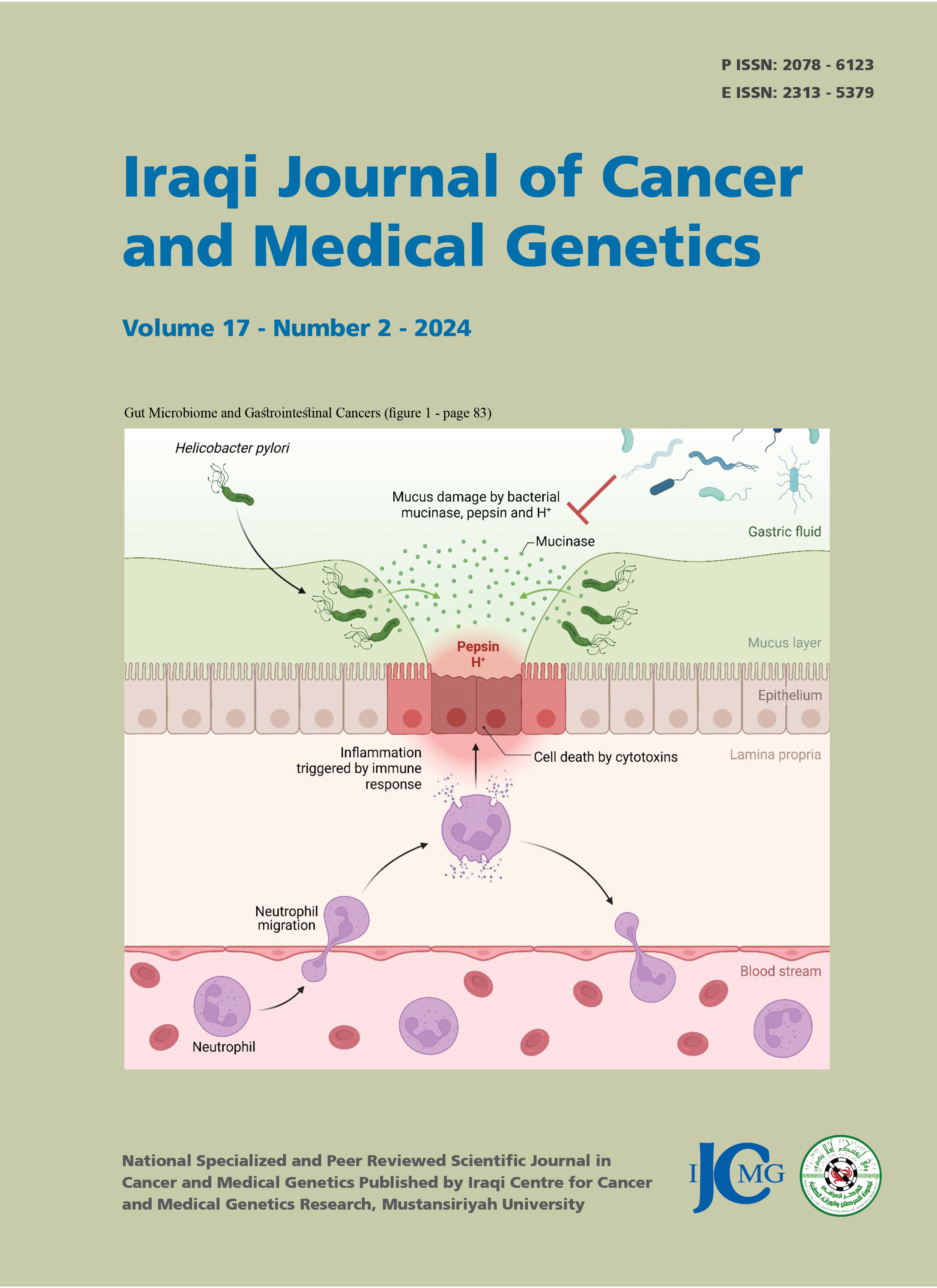Synergistic Effects of Oncolytic Newcastle Disease Virus AMHA1 and Chemotherapy in Treating Breast Cancer cells
Chemotherapy and NDV as Breast Cancer therapy
DOI:
https://doi.org/10.29409/ijcmg.v17i2.406الكلمات المفتاحية:
Breast cancer، methotrexate، Chemotherapy، Oncolytics، cisplatinالملخص
Breast cancer is a significant health concern, necessitating innovative therapeutic approaches beyond traditional treatments. This study investigates the synergistic effects of combining virotherapy and chemotherapy using the mouse mammary adenocarcinoma model. Combination cytotoxicity assays were performed using NDV at different hemagglutination units (HAU) and chemotherapy drugs, including Cisplatin, Methotrexate, Etoposide, Mitomycin C, Vindesine, and Cyclophosphamide, at different concentrations. Cell viability was assessed using the MTT assay, and synergistic interactions were determined through isobologram analysis. The AMN3 cell line, representing mammary adenocarcinoma, was cultured under standard conditions. NDV was propagated, purified, and quantified using embryonated chicken eggs and a hemagglutination assay. Our findings demonstrate that the combined application of NDV and chemotherapy significantly enhances the therapeutic outcomes compared to either modality alone. Mitochondrial permeability transition assays confirmed enhanced apoptosis rates in combination treatments, particularly with NDV plus Cisplatin, Methotrexate, Vindesine, and Cyclophosphamide. Additionally, NDV replication remained stable across all treatment conditions, suggesting that chemotherapy agents did not significantly impact NDV’s oncolytic activity. In conclusion, the findings highlight the potential of NDV as an adjunct to chemotherapy, enhancing cytotoxicity and apoptosis in mammary adenocarcinoma. The observed dose-dependent synergy suggests that optimal dosing strategies should be considered to maximize therapeutic efficacy while minimizing antagonistic effects. Further in vivo studies are warranted to explore the translational potential of NDV-chemotherapy combinations in breast cancer treatment.
التنزيلات
منشور
إصدار
القسم
الرخصة
الحقوق الفكرية (c) 2024 Iraqi Journal of Cancer and Medical Genetics

هذا العمل مرخص بموجب Creative Commons Attribution-NonCommercial 4.0 International License.






